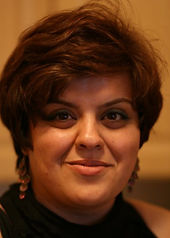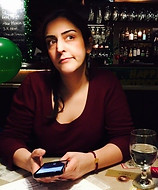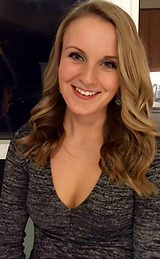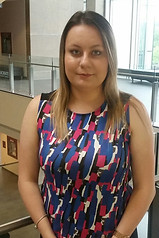The Golshani Group
We are interested in identification of novel gene/protein functions in model microbial organisms such as Saccharomyces cerevisiae and Escherichia. coli. This area of biology is often called functional genomics/proteomics and/or systems biology. We use molecular biology to investiage findings from our global screens. The two main areas that we target are protein synthesis regulation and DNA damage repair, both of which have implications in different human conditions such as cancer and apoptosis. We focus on pure research which drives innovation and therapetic design.
Our team is also interested in applying chemical-genomics to investigate the functions of natural bioactive compounds and nanoparticles. Our techniques can effectively decipher the mechanism(s) of action of these compounds. We perform systematic approaches to determine the target site(s) of some of these compounds. Examples include cymoxanil, thymol, silver nanoparticles, cyclohexamide and chitosan.
We are also vigorously involved in a number of bioinformatics research projects and computational tool development. For example we are the first group, which computationally predicted the global map of protein-protein interactions in human cells (also S. cerevisiae, E. coli, M. musculus A. thaliana and others).
Our research interests provide an excellent opportunity for the training of undergraduate and graduate students as well as post-doctoral fellows.



ABOUT US
Our Team

Dr. Ashkan Golshani, Lead Investigator
ashkan_golshani@carleton.ca | 613-520-2600 -1006
BSc, York University
MSc and PhD, University of Toronto
PDF, Banting and Best Institute Greenblatt’s Lab
By studying procesesse at the sytems (genomic/proteomic/transcriptomic) level we are able to elucidate novel gene functions and decipher biochemical pathways.
Favourite line: "Good afernoon" (at 10 am)



Katayoun Omid, Postdoctoral Reseracher. Plant Genetics.
Ph.D. Carleton University, 2017. MSc. Agro genomics, Paul Sabatier University, 2009 BSc. Agriculture and Plant Breeding, University of Tehran, 2006.The goal of my project is to identify and characterize a number of novel genes involved in Non-Homologous End-Joining (NHEJ) pathway in the yeast Saccharomyces cerevisiae which will lead to a better understanding of the fundamental process of DNA damage repair.
Favourite Line:
Daniel Burnside, Laboratory Manager
daniel_burnside@carleton.ca | 613-520-2600 X- 3650
Ph.D. Candidate. DNA repair, Bioinformatics, De novo protein design, Mechanism of Action studies.
I use the guilt-by-association model of protein-protein interactions to identify new proteins/complexes that play important roles in maintaining genetic information through DNA repair. I love my work and couldn't ask for better colleagues. Got a project? I'm in.
Favourite Line: "Is it lunch yet?"
Houman Moteshareie, Translation/NSD Team Lead
HoumanMoteshareie@cunet.carleton.ca
Ph.D. candidate. Investigation of novel genes involved in IRES mediated translation, Bioinformatics, Translation-fidelity, Synethetic peptide design. I focus on my research on translation initiation and IRES-mediate translation. Known globally as a "great guy"
Favourite line: "Don't toy with me boy"

Tom Kazmirchuk, Non-stop Decay
TomKazmirchuk@cmail.carleton.ca
Aberrant mRNA’s are degraded via three known pathways: Nonsense Mediated Decay, Nonstop Decay, and No Go Decay. I work on Nonstop decay – a cellular process which degrades mRNA lacking stop codons. The current aim of this project is to identify new proteins involved in the pathway using all of our resources, including computation. The overarching goal of this project is to link nonstop decay and to the development of cancer using S. cerevisiae as a model organism.
Favourite Line: “If you’re not part of the solution, you’re part of the precipitate... Also, where’s Ashkan?”
Tom Kazmirchuk, Non-stop Decay
TomKazmirchuk@cmail.carleton.ca
Aberrant mRNA’s are degraded via three known pathways: Nonsense Mediated Decay, Nonstop Decay, and No Go Decay. I work on Nonstop decay – a cellular process which degrades mRNA lacking stop codons. The current aim of this project is to identify new proteins involved in the pathway using all of our resources, including computation. The overarching goal of this project is to link nonstop decay and to the development of cancer using S. cerevisiae as a model organism.
Favourite Line: “If you’re not part of the solution, you’re part of the precipitate... Also, where’s Ashkan?”

Alex Mulet
NSERC Intern
I am working alongside Houman to investigate novel eukaryotic genes involved in the process of mRNA translation as well as its regulation, using Baker's yeast (S. cerevisiae) as our model organism. For example, we are currently using techniques such as polyribosome fractionation and profiling in order to examine RNA from yeast strains with certain genes of interest deleted, so to be able to assess changes in the relative amounts of translation machinery being used by the cell. My hobbies include learning languages, discovering nature, biking... and FOOD.
Favourite line: "Hello, Golshani lab, who is this? Ah, hello Bahram".

Maryam Hajikarimlou, Translation
Ph.D Candidate. Stop codon readthrough. Protein-protein interaction prediction, Global genomic interactions, Protein Synthesis
Favourite Line: "How can I help?"
Hobbies: Hiking, Kayaking, Travel, Food+Drink
Kaleigh Timmins, DNA Repair
Undergraduate Student
DNA Damage and Repair
Kaleigh worked on studying the genetic interactions of novel DNA repair proteins. She was also the full-time lab DJ. "I did what Dan told me, and if he wasn't there I did what Mohsen told me and stuff happened."
Kaleigh investigated the function of newly discovered non-homologous end joining genes.
Favorite Line: "Any song requests?"

Duale Ahmed, Immunometabolism
DualeAhmed@cmail.carleton.ca
MSc, Carleton University; PhD Candidate (Co-supervised by Dr. Edana Cassol)
Metabolism and immune function are intimately
linked and specific metabolic programs are required to mediate effector functions. However, the underlying factors of immunometabolism and their impact on effector function remain poorly understood in macrophages. I aim to systematically characterize metabolic and bioenergetic procsses associated with type I IFN responses
Favourite line: "A life, Jimmy, you know what that is? It's the s*** that happens while you're waiting for moments that never come."


Brittany Ellis, Chemical Genomics
Undergraduate Student
Department of Chemistry. Chemical Genomics, Mechanism of action, active site stability. Understanding the Mechanism of action of a bioactive compound is important to understand its target in vivo and its safety. We used the gene deletion study the mechanism of action of cymoxanil. I have pinned and pipetted enough to get calluses on my fingers, and I clean the lab when I can't find Dan (so basically everyday). I am so thankful to be apart of a lab with such helpful and caring individuals, and I wouldn't be the scientist I am today without all of their support.
Favourite Line: "I don't get it, I'm panicking"

Eshan Silva, DNA Repair
DSRI Internship
Description:
-Dean’s summer research internship
-Undergraduate student
-Studies genetic interactions within the processes of homologous and non-homologous end joining DNA damage repair.
-Pretty good at baseball
Favourite line: “The learning curve will be a bit steep”

Anna Kluew, DNA Repair
Undergraduate Student
Anna works with Dan and Mohsen to study the mechanisms underlying efficient DNA repair.
Anna spends a significant amount of her time in the lab trying to keep Dan's attention long enough to get an answer to her questions. Her thesis work involves characterizing the function of a novel protein complex that participates in double strand break repair. She could tell you what complex but then she would have to kill you :)

Renan Aguena, DNA Repair
Exchange
Exchange student at Carleton University. Undergraduate Student in Medicine at Federal University of Mato Grosso.
Studying DNA repair with Dan and learning a lot. I am tankful to be part of the lab where everyday I can learn and at the same time have a great experience with other members of the lab.
Favourite Line: Pick a song!
Hobbies: Travel

Leyla Bouti, DNA Repair
Undergraduate Student
Investigating the role of DNA repair proteins involved in non homologous end joining and their genetic interactions.
When I'm not in class or asking a million questions in the lab I'm practicing yoga, creating art, or volunteering with the Student Alliance for Mental Health and the Biology Society at Carleton.
Favorite Line: "Nothing is to be feared, it is only to be understood." - Marie Curie
Need more details? Contact us
We are here to assist. Contact us by phone, email or via our Social Media channels.